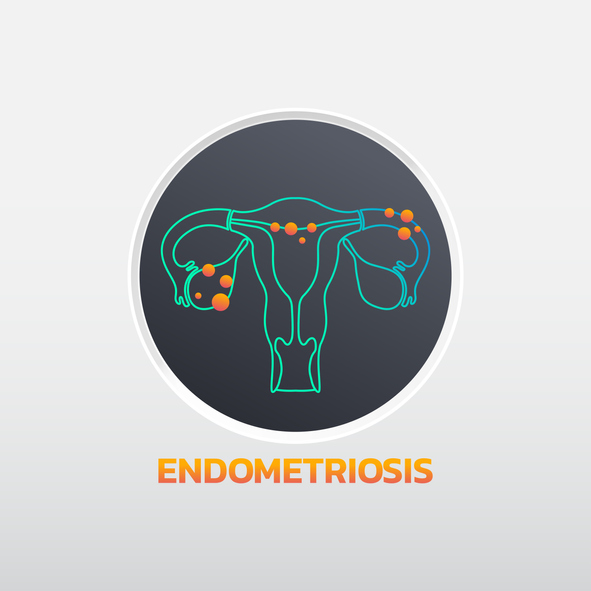Treating the pain of endometriosis

Many women suffer through years of painful menstrual periods before they are able to get an answer about what’s causing them: a common and often undiagnosed condition called endometriosis.
What is endometriosis?
Endometriosis is a condition that occurs when tissue much like the tissue that lines a woman’s uterus — called the endometrium — starts to grow in other places inside the body. Most commonly, these growths are within the pelvis, such as on the ovaries, the fallopian tubes, the outer surface of the uterus, or the bladder.
During the menstrual cycle each month, the tissue lining the uterus grows thicker, then breaks down as blood that exits through the vagina. The wayward tissue growths of endometriosis respond to the same hormones as the uterine lining. But instead of draining through the vagina as a menstrual period, blood from tissue growth elsewhere in the body has nowhere to go. It pools around nearby organs and tissues, irritating and inflaming them, and sometimes causing scarring. In addition to pain, endometriosis can cause other symptoms, such as bowel- and bladder-related problems, heavy periods, sexual discomfort, and infertility.
Diagnosing endometriosis may take time
In some cases, diagnosis of endometriosis is delayed because teenagers and adult women assume that their symptoms are a normal part of menstruation. Those who do seek help are sometimes dismissed as overreacting to normal menstrual symptoms. In other cases, the condition may be mistaken for other disorders, such as pelvic inflammatory disease or irritable bowel syndrome.
A study by the World Endometriosis Research Foundation found that among women ages 18 to 45, there was an average delay of seven years between the first symptoms and the time of diagnosis. Most cases are diagnosed when women are in their 30s or 40s. The problem of getting an accurate diagnosis and treatment is worse for some minority groups, including people of color and indigenous people, according to the Endometriosis Foundation of America.
Getting relief from endometriosis
While there is no known cure for endometriosis, the good news is that medications, surgery, and lifestyle changes can help you find relief and manage the condition.
Your doctor might recommend one or more treatments to help relieve pain and other symptoms. These include:
- Nonsteroidal anti-inflammatory (NSAID) medications. These may be either prescription or over-the-counter formulations, including ibuprofen (Advil, Motrin) and naproxen (Aleve), which are used to relieve pain.
- Hormone therapies. Because endometriosis is driven by hormones, adjusting the hormone levels in your body can sometimes help to reduce pain. Hormone medications are prescribed in different forms, from pills, vaginal rings, and intrauterine devices to injections and nasal sprays. The goal is to modify or halt the monthly egg-releasing cycle that generates much of the pain and other symptoms linked with endometriosis.
- Acupuncture. This is an alternative medicine treatment, which uses small needles applied at specific sites on the body to relieve chronic pain.
- Pelvic floor physical therapy. This practice addresses problems with the pelvic floor, a bowl-shaped group of muscles inside the pelvis that supports the bladder, bowel, rectum, and uterus. Pelvic pain sometimes occurs when muscles of the pelvic floor are too tight, causing muscle irritation and muscular pain, known as myofascial pain. To treat myofascial pain, a specially trained physical therapist uses her hands to perform external and internal manipulations of the pelvic floor muscles. Relaxing contracted and shortened muscles can help alleviate pain in the pelvic floor, just as it would in other muscles in the body.
- Cognitive behavioral therapy. Another option to help manage pain is cognitive behavioral therapy (CBT). Although few studies have looked at the effects of CBT on endometriosis symptoms, it has been used to successfully manage other conditions that cause chronic pain. CBT is based on the idea that healthier thought patterns can help reduce pain and disability, and help people cope with pain more effectively.
- Stress management. Experiencing chronic pain can cause stress, which may heighten sensitivity to pain, creating a vicious cycle. Because stress can make pain worse, stress management is an important component of endometriosis management.
- Lifestyle improvements. Maintaining a regular exercise program, a healthy sleep schedule, and a healthful, balanced diet can help you better cope with and manage stress related to your endometriosis.
- Surgery. Your doctor may recommend surgery to remove or destroy abnormal tissue growth, to help improve your quality of life or your chances of getting pregnant. Some studies have shown that removing growths of abnormal tissue and scar tissue caused by mild to moderate endometriosis can increase the likelihood of getting pregnant.
Ultimately, it may take time to find the right combination of treatments to ease pain and manage this condition. But working closely with your doctor makes it more likely that you will be able to do so.
The post Treating the pain of endometriosis appeared first on Harvard Health Blog.
